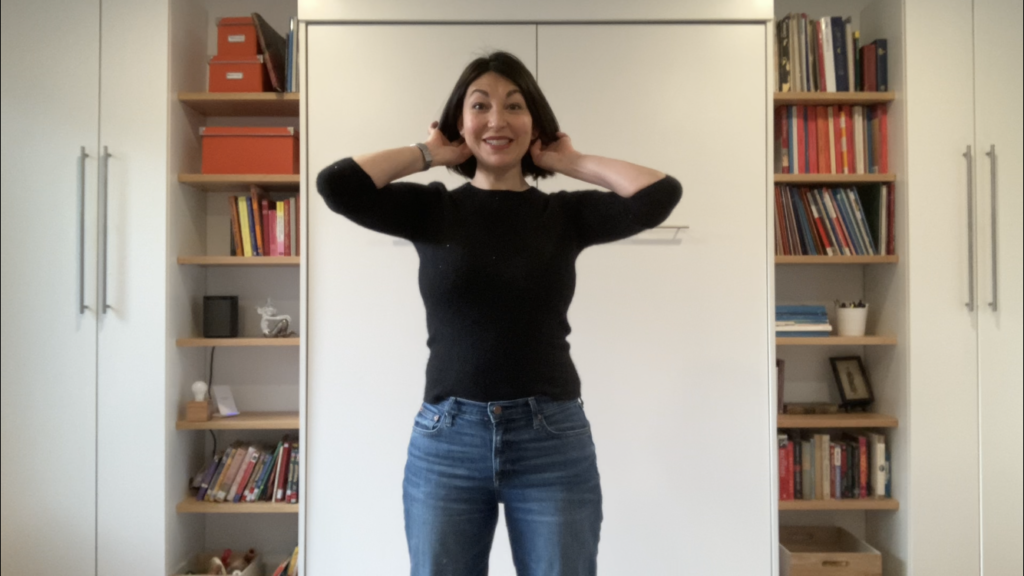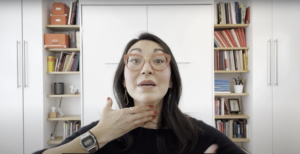Today’s exercise is an absolute staple of my own practice, and something that I teach daily: the Nobble Lift. For my money, the best posture is the one that makes the muscles of the body available for singing, motion, and expression – relaxed alertness, NOT tin soldier. This simple exercise elongates the back of the neck, recalibrates the natural curves of the spine, and helps the body return to its balanced position so that you can stand on your skeleton and make the soft tissues of the body available for breath and movement. Amazing! Here’s a short video on how to do the Nobble Lift, or if you’d rather read about it, read on!
To begin, consider why you might need to lift your nobbles (I’ll tell you what they are in a moment!). Slouching, driving, hunching over a computer (ahem, Zoom), holding a heavy choral folder all contribute to a posture where the head is craned forward, forcing the whole spine to exaggerate its curvatures to cope with the imbalance of the head’s huge weight cantilevering forward of the spine. Google tells me that every inch of forward head posture results in 10 pounds of added weight for the neck – yikes! Sadly, you might be doing this even when you’re engaged and energized – even among students who are mindful of starting posture, reaching the chin or craning the neck forward to be expressive or to connect with the conductor or audience is INCREDIBLY common.

The problem with singing in this position is twofold: first the air tube (technical term) is all crumpled and kinked, so air flows less freely. Even more problematically, the resulting craning of the chin creates a great deal of rigidity in the muscles surrounding the larynx. To feel this effect in its most exaggerated form, try looking straight up at the ceiling and speaking or singing – it. is. horrible.
So, what’s the fix?
Let’s do the Nobble Lift!
- Standing or sitting, reach the hands up to the back of the head, and find the bony base of the skull. For most people, this feels like a ridge or, on my head, two bumpy . . . nobbles.

- Using the fingers to guide the movement, lift those nobbles directly upward. Stay with a vertical motion, rather than pushing forward or tilting the head – you want to lift straight up, so that the crown of the head moves directly toward the ceiling.

- Observe the chain of motion through the body. As I lift my nobbles, I begin by feeling the crown of the head moving upward (this is the same “skull on a string” feeling that choir directors of the 1990’s encouraged, and they were totally on the right track).
- As I continue, I feel the back of the neck lengthen and its curvature become less extreme (although a gentle curve should remain).
- Next, as I continue to lift the nobbles, my torso re-balances itself, lengthening down the back body, and raising the breastbone so that the chin and collarbones are actually CLOSER to one another, with the head in a neutral straightforward orientation and the chest buoyant but not thrust upward.
- Finally, I feel the ribcage lift off of the hip bones, giving me a small amount of space there in the side body and a soft, open sensation in the belly.
This is a wonderful place to start your practice, and you can repeat the lift, eventually without even using the fingers, as often as you want during the day or during a rehearsal.



4 Responses